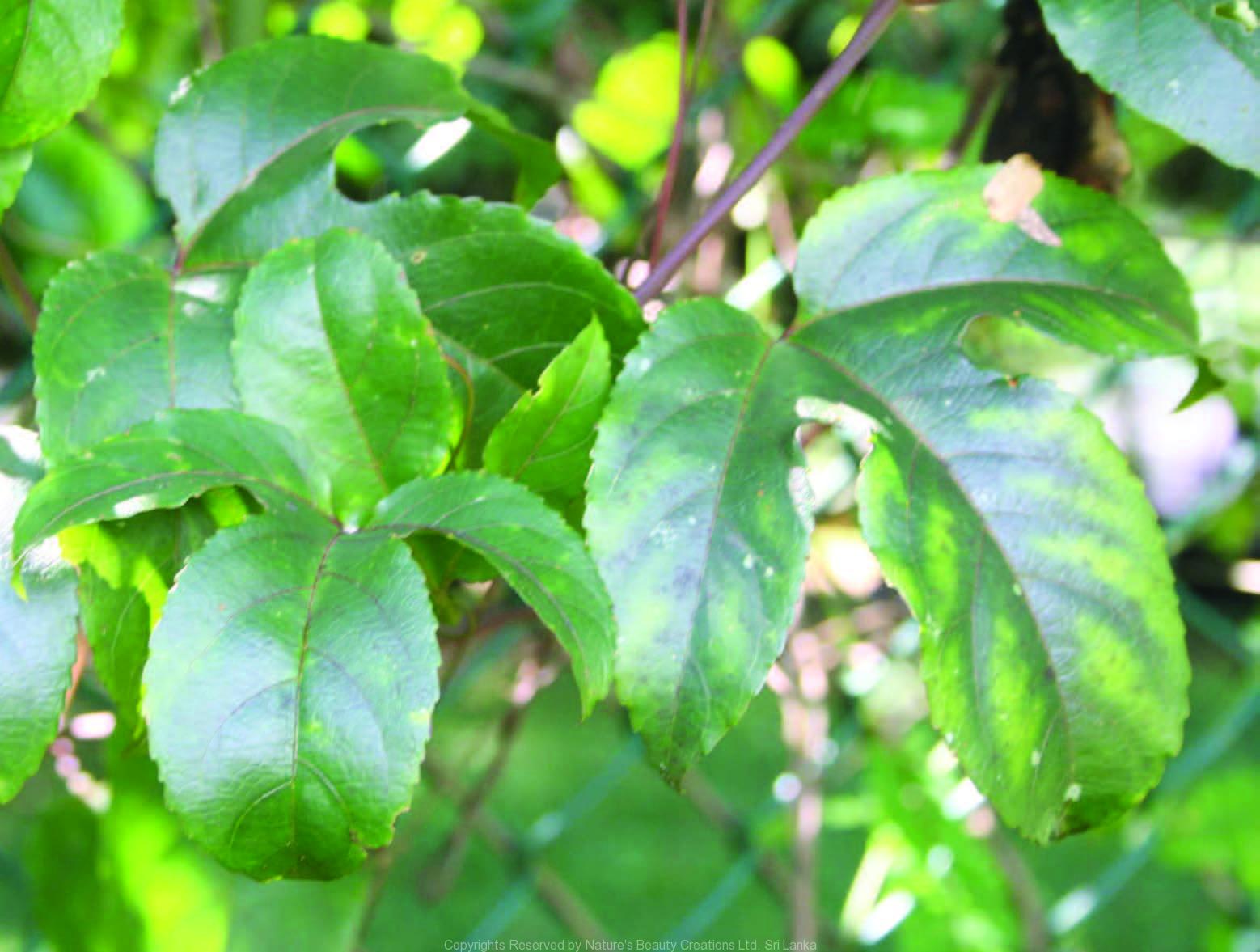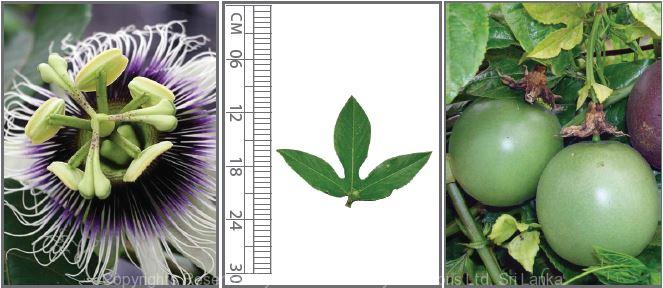

Traditional Knowledge
Useful plant parts :
Leaf
Uses in traditional medicine :
- Salad prepared from young leaves is given for high blood pressure in elderly patients
Scientific Research
Chemical constituents:
Triterpene glycoside: passiflorine and other flavonoids, triterpenes, glycosides from leaves; cyanogenic glycosides: prunasin and sambunigrin from fruits, leaf and stem; sulfur containing compounds: 3-methylthio-hexanol, 2-methyl-4- propyl-1, 3-oxathiane from flavour concentrate of yellow passion fruit; cycloartane triterpenoid saponins: cyclopassifloside II, VI, IX, XI, XII and XIII, cyclopassifolic acids B and E from stem
Bioactivity :
Aqueous and aqueous ethanol extract of leaves: anti-inflammatory, anxiolytic; rind extract and fruit pulp: antihypertensive; aqueous extract of plant: central nervous system depressant, shows hepatobiliary and pancreatic toxicity
Clinical:
Note :
Ripe fruits are edible
References : Bombardell, E. et al., (1975), Passiflorine, A new Glycoside from Passiflora edulis, Phytochemistry, 14, 2661-2665. Ichimura, T. et al., (2006), Antihypertensive Effect of an Extract of Passiflora edulis Rind in Spontaneously Hypertensive Rats, Bioscience, Biotechnology, and Biochemistry, 70(3), 718-721. Konta, E. M. et al., (2013), Evaluation of the Antihypertensive Properties of Yellow Passion Fruit Pulp (Passiflora edulis Sims f. flavicarpa Deg.) in Spontaneously Hypertensive Rats, Phytother Res. Maluf, E. et al., (1991), Assessment of the hypnotic/sedative effects and toxicity of Passiflora edulis aqueous extract in rodents and humans, Phytotherapy Research, 5(6), 262–266. Montanher, A. B. et al., (2007), Evidence of anti-inflammatory effects of Passiflora edulis in an inflammation model, Journal of Ethnopharmacol- ogy, 109(2), 281–288. Petry, R. D. et al., (2001), Comparative Pharmacological Study of Hydroethanol Extracts of Passiflora alata and Passiflora edulis Leaves, Phytotherapy Research, 15, 162–164. Seigler, D. S. et al., (2002), Cyanogenic allosides and glucosides from Passiflora edulis and Carica papaya, Phytochemistry, 60, 873–882. Wang, C. et al., (2013), Cycloartane triterpenoid saponins from water soluble of Passiflora edulis Sims and their antidepressant-like effects, J Ethnopharmacol, 148(3), 812-7. Winter, M. et al., (1976), Identification and Synthesis of two New Organic Sulfur Compounds from the Yellow Passion Fruit (Passiflora edulis f. flavicarpa), Helvetica Chimica Acta, 59(5), 1613–1620. Zhang, J. et al., (2013), Glycosidic inhibitors of melanogenesis from leaves of Passiflora edulis, Chem Biodivers, 10(10), 1851-65.
Copyrights Reserved By
Natures Beauty Creations



